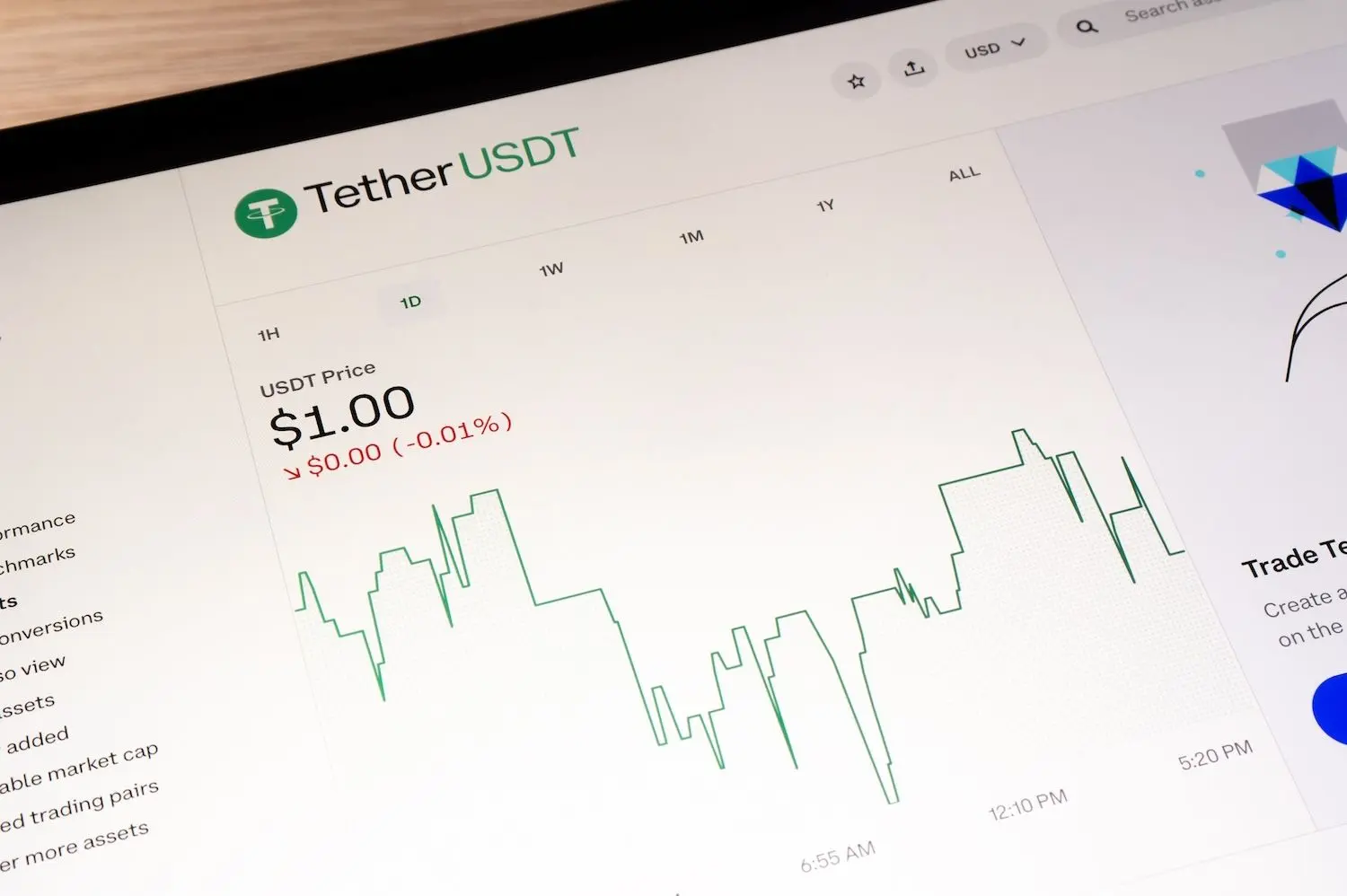Tether Operations Limited, the world's largest stablecoin issuer, purchased just $7 billion in US Treasury bonds during the second quarter of 2025, marking a sharp 89 percent decline from the $65 billion it acquired in the first quarter. The dramatic slowdown in Treasury purchases comes as the company diversifies its investment portfolio while maintaining $162.5 billion in total assets backing its USDT stablecoin.
What to Know:
- Tether's US Treasury purchases dropped from $65 billion in Q1 to $7 billion in Q2 2025
- The company now holds $105.5 billion in direct US Treasuries and $24.4 billion in indirect exposure
- Total USDT tokens issued reached 157.1 billion with $5.47 billion in excess reserves
Treasury Buying Spree Comes to Abrupt End
The Bermuda-based company released its Q2 2025 attestation report Thursday, revealing total Treasury holdings of $105.5 billion in direct investments plus an additional $24.4 billion in indirect exposure through overnight reverse repurchase agreements and non-US government bonds. CEO Paolo Ardoino announced the figures on social media platform X, highlighting the company's $5.47 billion in excess reserves beyond the full backing required for all issued tokens.
Tether's Treasury accumulation began accelerating in late 2024 following the implementation of the European Union's Markets in Crypto-Assets regulation. The company purchased $33 billion in Treasury bonds during the fourth quarter of 2024, then dramatically increased that pace with $65 billion in acquisitions during the first quarter of 2025. The sudden deceleration in Q2 represents a fundamental shift in the company's reserve management strategy.
The attestation report shows Tether's non-US Treasury holdings decreased by approximately $17 billion during the quarter. Other cash equivalent investments, including repurchase agreements and money market funds, remained largely flat with changes of less than $1 billion in either direction.
Regulatory Compliance Drives Investment Decisions
Stablecoin regulations have become the primary driver behind Tether's Treasury purchasing strategy. The proposed GENIUS Act in the United States would mandate that stablecoin issuers hold their asset reserves primarily in Treasury securities, creating potential compliance challenges for companies with diversified portfolios.
Tether has publicly supported the legislation despite the operational constraints it would impose.
The company's lobbying efforts suggest confidence in its ability to meet regulatory requirements, though the recent shift in purchasing patterns raises questions about long-term compliance strategies.
The regulatory landscape has forced stablecoin issuers to reconsider their reserve compositions. MiCA regulations in Europe require specific asset backing standards, while proposed US legislation would establish similar Treasury-focused requirements. These dual regulatory pressures have created a complex compliance environment for global stablecoin operators.
Alternative Investments Gain Prominence
While Treasury purchases slowed, Tether expanded its alternative investment portfolio during the second quarter. The company increased its Bitcoin holdings and gold reserves while making undisclosed corporate investments across more than 120 companies. Interest income from existing Treasury positions has provided funding for these diversification efforts.
The shift toward alternative assets reflects broader institutional trends in cryptocurrency and precious metals allocation.
Tether's gold purchases align with traditional inflation hedging strategies, while Bitcoin investments demonstrate continued confidence in digital asset markets despite regulatory uncertainty.
Corporate investment activities remain largely undisclosed, though previous reports indicate focus on blockchain technology, artificial intelligence, and financial services companies. These investments represent a departure from the conservative Treasury-focused approach that characterized Tether's strategy through early 2025.
Understanding Stablecoin Reserve Management
Stablecoins maintain their dollar peg through full collateralization with liquid assets, primarily cash and cash equivalents. US Treasury bonds serve as the preferred reserve asset due to their liquidity, safety, and regulatory acceptance. Overnight reverse repurchase agreements provide additional yield while maintaining near-cash liquidity characteristics.
The GENIUS Act would formalize Treasury requirements that many stablecoin issuers already follow voluntarily.
Current industry standards typically require 80-100 percent Treasury backing, with remaining reserves held in cash or cash equivalents. MiCA regulations establish similar but distinct requirements for European market participants.
Reserve attestation reports provide quarterly transparency into asset backing calculations. Independent accounting firms verify that total reserves match or exceed outstanding token supply, ensuring full collateralization at all times.
Market Implications and Future Outlook
The $50 billion gap between issued USDT tokens and direct Treasury holdings could complicate future regulatory compliance if stricter requirements take effect. Current indirect Treasury exposure through repurchase agreements may not satisfy all regulatory definitions of Treasury backing, creating potential adjustment needs.
Tether's reduced Treasury appetite coincides with broader institutional shifts in fixed-income markets. Rising interest rates have improved Treasury yields, but regulatory uncertainty has prompted diversification strategies across the stablecoin sector.
The company's pivot toward alternative investments suggests confidence in regulatory flexibility around reserve composition. However, proposed legislation could force unwinding of non-Treasury positions if compliance requirements prove incompatible with current diversification strategies.
Closing Thoughts
Tether's dramatic reduction in Treasury purchases from $65 billion to $7 billion between quarters signals a strategic shift in reserve management as regulatory frameworks evolve. With $162.5 billion in total assets and growing alternative investments, the company appears to be balancing compliance requirements with portfolio diversification goals while maintaining its position as the dominant stablecoin issuer.

